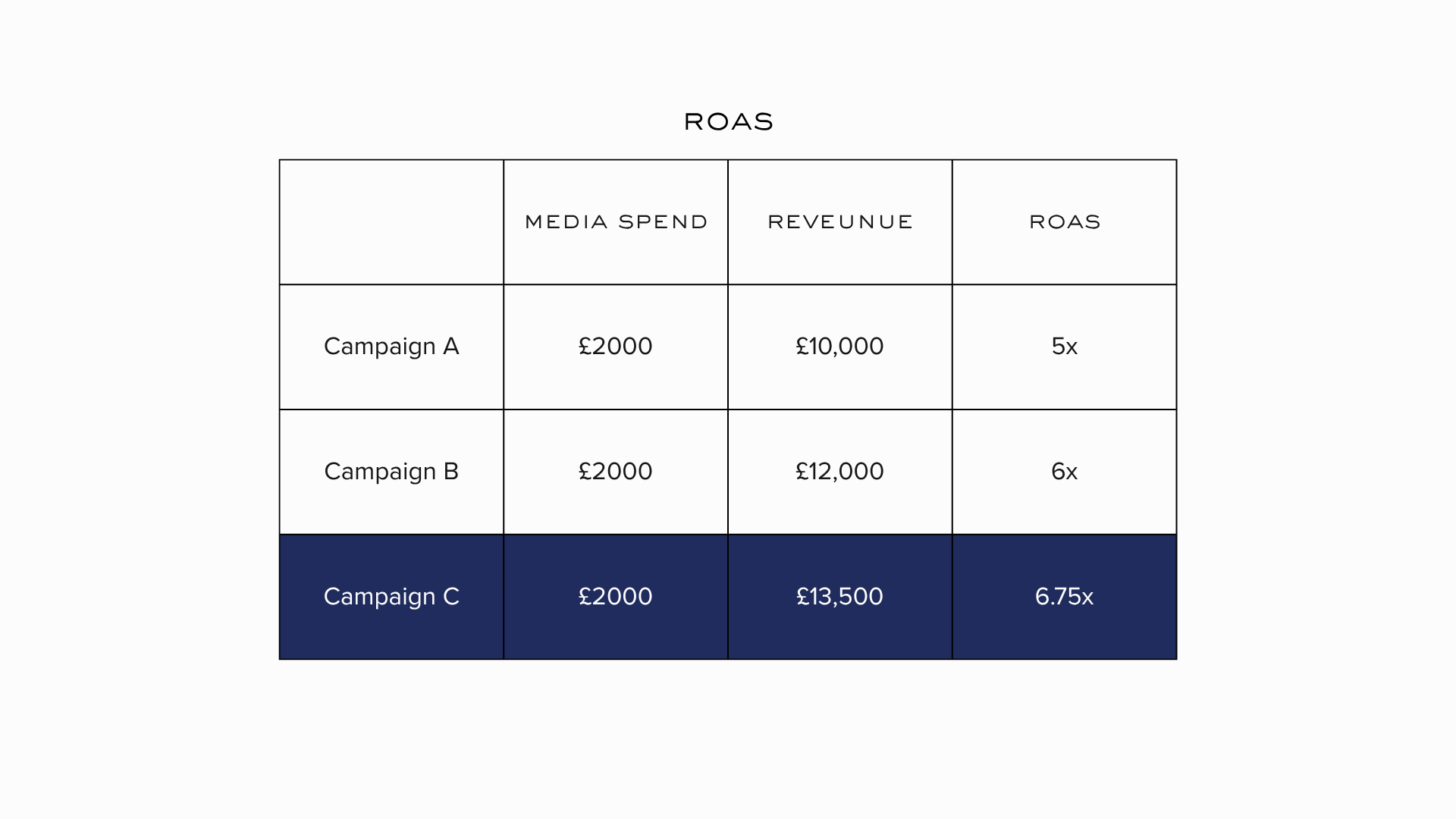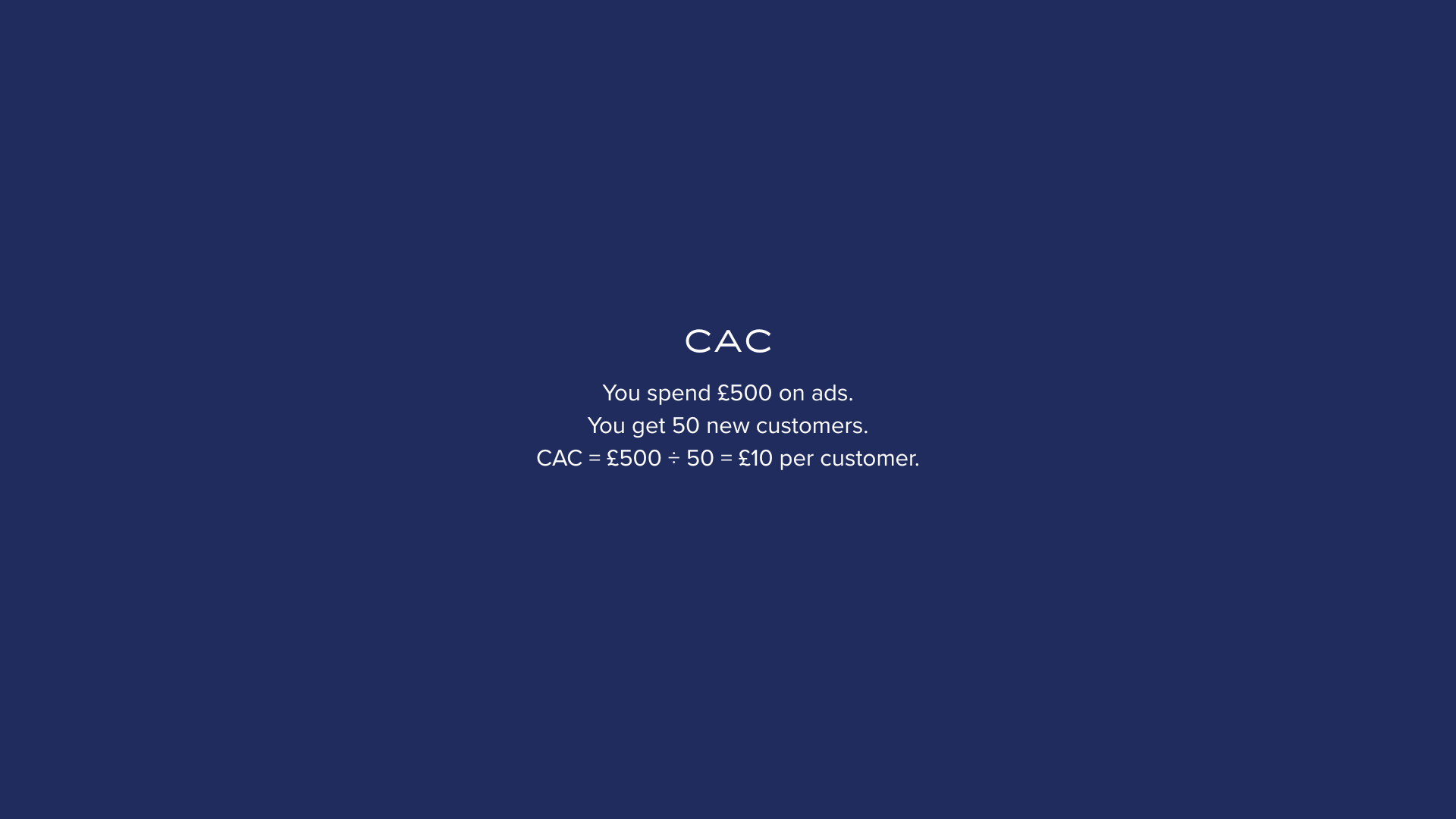What Metrics Matter and Why
Image Credit: Unknown
For growing DTC and luxury brands, performance marketing can feel overwhelming. With so many acronyms and metrics, it's easy to lose sight of what truly matters beyond just revenue.
In this short guide, we break down some essential Key Performance Indicators (KPIs) and what they actually tell you.
Website Sessions: The total number of visits to your website, showing how and where people found you.
Why it matters: Understanding where your traffic comes from helps you identify which marketing channels are driving the most visitors and where you may need to make improvements.
Quick insight: A high number of sessions doesn’t always mean more sales. Pairing this metric with conversion rate reveals the effectiveness of your traffic.
AOV (Average Order Value): AOV shows how much customers typically spend per order.
Why it matters: A higher AOV means each transaction brings more revenue. From a performance marketing perspective, we look to see what opportunities we have to improve our AOV.
Quick insight: If AOV is low, you may need to reassess product bundles, shipping thresholds, or upsell strategy. From the Figure below, we can see how even a small increase in AOV can affect total revenue.
Figure 1 / Image Credits: Folta Consulting
Conversion Rate: This is the percentage of website sessions that result in a sale.
Why it matters: It shows how well your site turns visitors into buyers. If traffic is high but sales are low, improving the conversion rate is often more efficient than increasing spend.
Quick insight: A strong conversion rate depends on things like page load speed, clear CTAs (call-to-action), and an intuitive checkout flow. Figure 2 below outlines how a small increase in conversion rate can result in an increase in orders and ultimately revenue.
Figure 2 / Image Credits: Folta Consulting
Media Spend & ROAS: Your media spend is what you pay for ads. ROAS (Return on Ad Spend) shows how much revenue you’re getting back for every pound spent on ads.
Why it matters: ROAS helps you understand whether your ad campaigns are profitable. As long as the ROAS is 1 or higher, you are breaking even or making a profit on your ad spend.
Quick insight: High media spend isn’t a problem if ROAS is healthy.
Figure 3 / Image Credits: Folta Consulting
CAC (Customer Acquisition Cost): This is how much it costs to acquire a new customer.
Why it matters: Paired with AOV and CLTV (Customer Lifetime Value), CAC helps you understand if you're acquiring customers profitably.
Quick insight: CAC varies by channel. It’s important to test and compare.
Figure 4 / Image Credits: Folta Consulting
Note: This is a simplified example, but in reality, CAC could also include other costs like staffing, tools, and other overheads. But at its core, CAC tells you how much it costs to get a new customer.
CPC (Cost Per Click): CPC projects how much you’re paying per click on your ads.
Why it matters: It helps you compare efficiency between platforms and campaigns. But don’t optimise for clicks alone; what happens after the click matters more.
Quick Insight: A low CPC means you’re getting traffic cheaply, but it’s only valuable if those clicks convert into sales.
Figure 5 / Image Credits: Folta Consulting
CLTV (Customer Lifetime Value): CLTV is the projected total revenue a customer brings over their lifetime.
Why it matters: If you know CLTV, you can confidently spend more to acquire high-quality customers.
Quick insight: This metric takes time to calculate but becomes crucial for scaling. Figure 6 shows how a customer’s value grows over multiple purchases, giving a clear view of the long-term revenue potential beyond just the first order.
Figure 6 / Image Credits: Folta Consulting
Return Rate: Return rate gives instant feedback on customers’ engagement with the product: fit, colour, physical attributes, and if people are abusing the return system.
Why it matters: In luxury, frequent ordering and returning are common but not ideal. A low return rate signals a high-quality product and satisfied customers.
Quick insight: Managing return rate helps maintain brand reputation and reduce unnecessary costs.
Figure 7 / Image Credits: Folta Consulting
New vs Returning Customer Rate: This measures the proportion of first-time buyers versus repeat customers.
Why it matters: A good balance shows you’re attracting new customers while building loyalty with existing ones.
Quick insight: Tracking these rates helps optimise marketing efforts for growth and retention.
Figure 8 / Image Credits: Folta Consulting
In Summary
You don’t need every metric, and most early-stage brands don’t have them all set up. But understanding the basic KPIs helps you ask better questions, make informed decisions, and have more productive conversations with agencies or consultants.
Let Folta simplify the numbers and turn them into strategies. Get in touch today to learn more.









